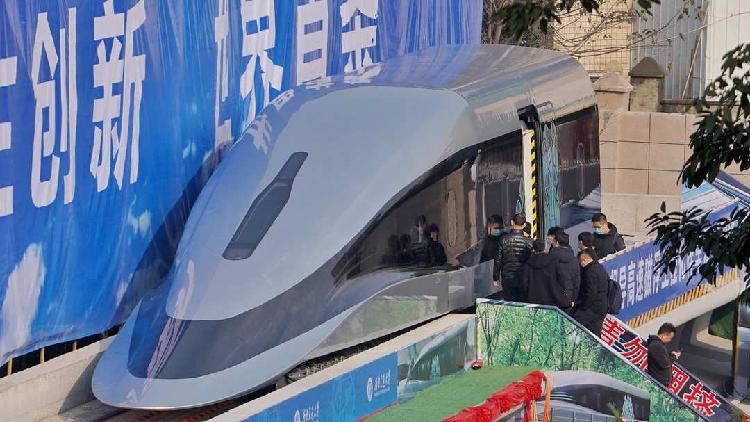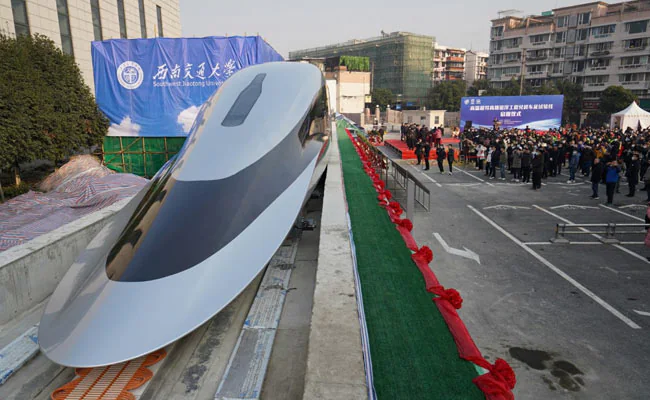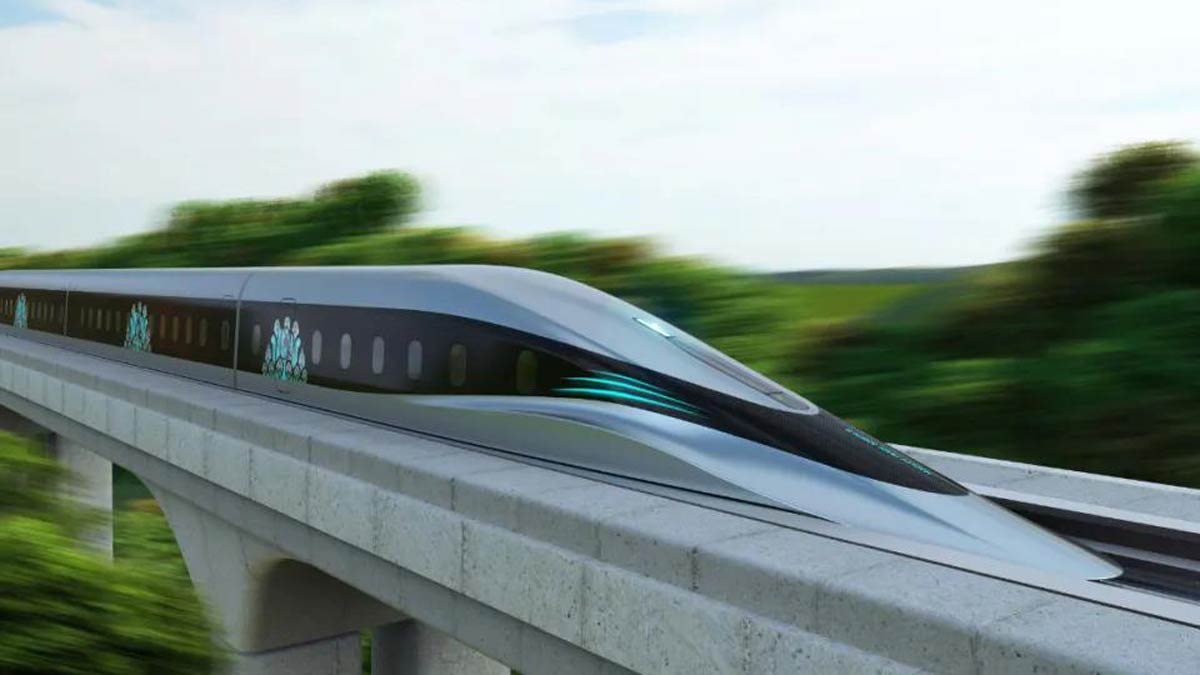China’s Floating Maglev Train: Faster Than a Plane, Ready to Redefine Travel

China’s groundbreaking maglev train—dubbed the “floating train”—is redefining the limits of land transportation, reaching an astonishing speed of 620 km/h in just 7 seconds, a feat that positions it faster than many commercial jetliners during takeoff. Unlike conventional trains that rely on wheels and rails, this futuristic marvel uses magnetic levitation technology, allowing it to hover frictionlessly above its track using high-temperature superconducting (HTS) magnets. The result is a whisper-quiet, ultra-smooth, and lightning-fast ride that not only slashes travel times but also sets new benchmarks in energy efficiency and sustainability. Developed by engineers at Southwest Jiaotong University, the train’s prototype features a carbon-fiber body and operates on a specialized test track, where it has demonstrated acceleration and performance rivaling aircraft—all without ever leaving the ground. What makes this development even more remarkable is its potential to revolutionize intercity travel: a maglev journey from Beijing to Shanghai could take under two hours, eliminating airport waits, reducing carbon emissions, and offering an alternative that is both greener and more reliable than air travel. With China already operating the world’s fastest commercial maglev line in Shanghai (at 431 km/h), this next-gen system—with ambitions to cross 800 km/h in future versions—represents the next leap toward high-speed, low-impact mobility. However, challenges remain, from the immense infrastructure costs to the technical demands of building and maintaining vacuum tunnels and specialized tracks. Yet China’s push forward signals not just a technological breakthrough, but a broader vision: to lead the world in next-generation transportation that is fast, clean, and friction-free—literally and figuratively.

Why This Train Matters
| Feature | Impact |
|---|---|
| Frictionless levitation | No contact = less wear and maintenance |
| Super acceleration | 0–650 km/h in 7 seconds, rivaling jetliners |
| Green transport | Fully electric, with potential for renewable energy use |
| Ultra-high speed | Promises 800+ km/h travel in near future |
Faster Than Planes?
Yes—and here’s why it matters:
Planes cruise at 850–900 km/h but require airport check-ins, boarding delays, and airspace control.
Maglevs could connect cities like Beijing and Shanghai in under 2 hours, including boarding time—airport-free and direct.
China already operates the world’s fastest commercial maglev (Shanghai’s 431 km/h line). The new prototype, tested on a 1 km track in Hubei, is breaking the sound barrier of ground trave

The Tech Behind the Speed
Superconductors: Cool down to -196°C to create powerful magnetic fields.
Levitation + Propulsion: Separate systems for lifting the train and pushing it forward.
Vacuum tunnels: In future builds, low-pressure tubes could eliminate air resistance, pushing speeds even higher—toward 1,000 km/h.
This system is not just about speed—it’s about a smarter future for transportation: silent, efficient, and eco-conscious.
Final Word
We’re witnessing the dawn of a new era—transportation at the speed of thought. China’s floating maglev train isn’t just about getting from A to B faster. It’s about reimagining what’s possible.The next time you hear a train whistle—imagine it lifting off the rails and leaving a jet behind.






